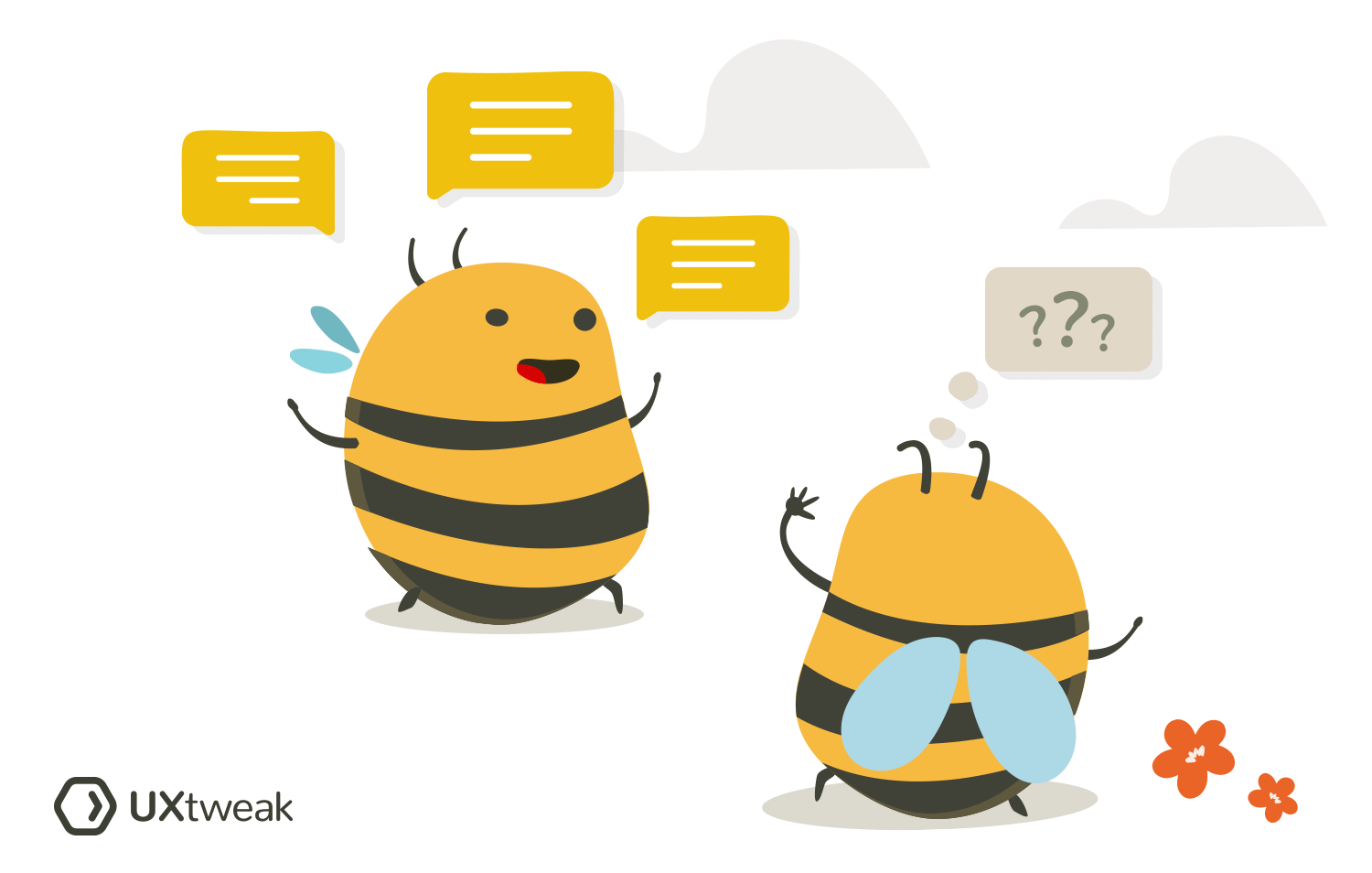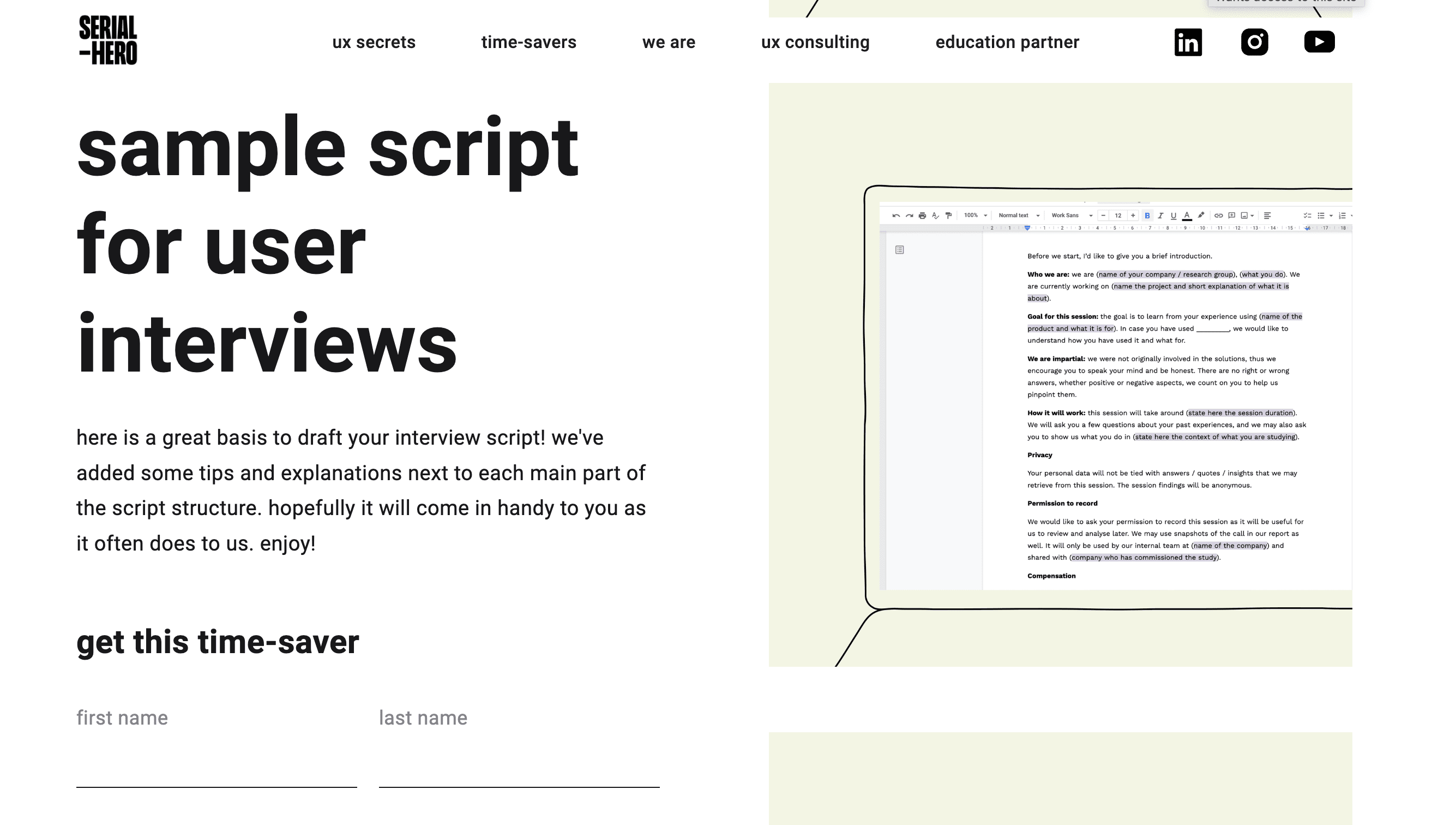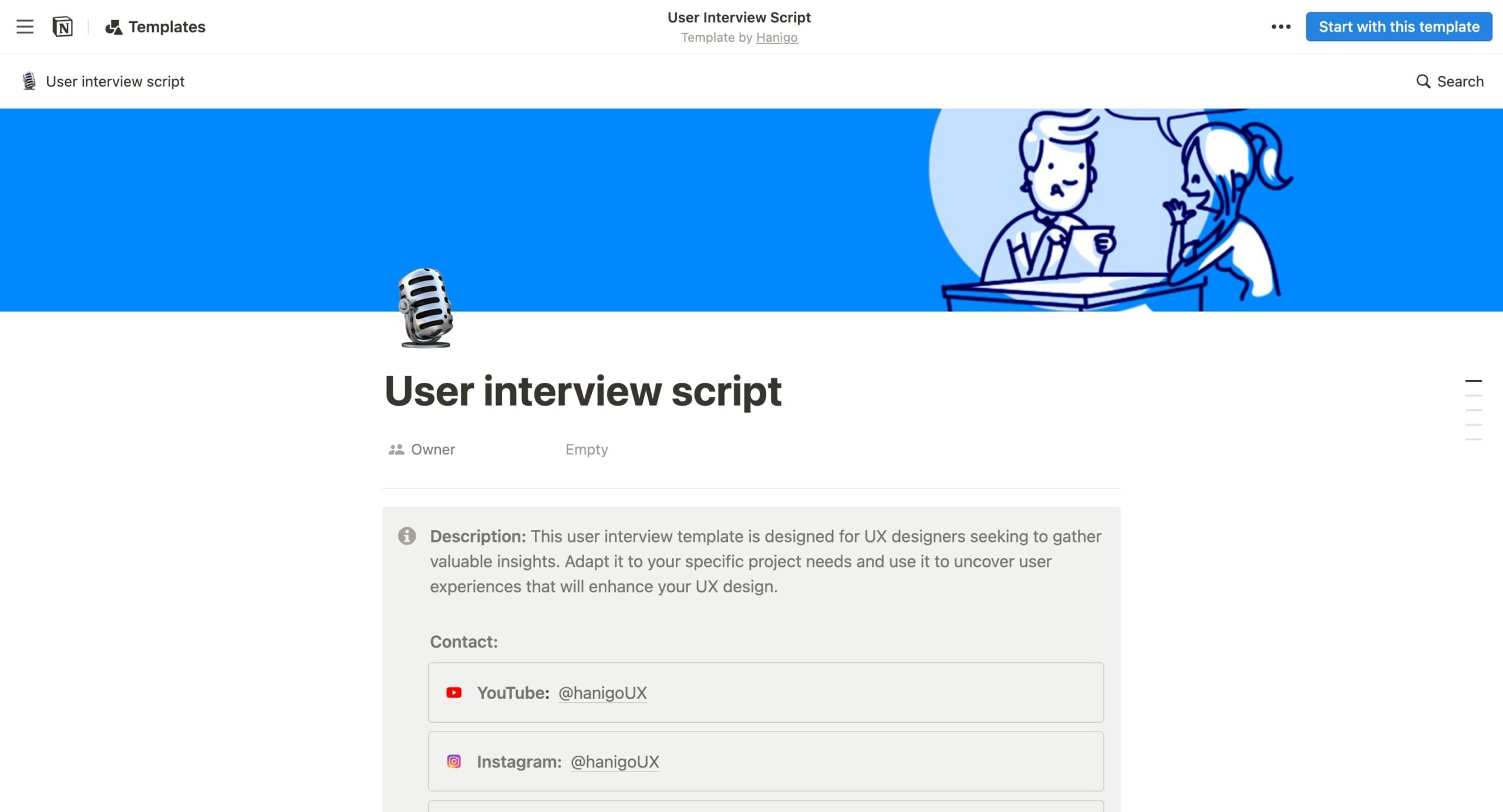User interviews are a goldmine for understanding your customers. They go beyond surveys and analytics, giving you direct access to the thoughts, feelings, and experiences that shape how people interact with your product or service. But crafting the right questions and guiding the conversation can be daunting.
That’s where user interview script templates come in.
These handy frameworks provide a structured approach, helping you cover essential topics while leaving room for spontaneous insights.
In this article, we’ll explore five of the best user interview script templates designed to elevate your user research and uncover valuable insights to fuel your product improvements.
But before that, let’s start with the basics.
What is a user interview script?
A user interview script is a pre-written guide outlining the key questions you want to ask during an interview. It helps you cover all essential topics while allowing flexibility to explore unexpected insights from users. You can think of it as a roadmap for your conversation, ensuring you don’t miss any critical areas while still leaving room for organic discussion.
A well-crafted user interview script includes a mix of open-ended questions that encourage detailed responses, along with more specific probes to dive deeper into particular topics. It also typically has a clear introduction and conclusion to set the stage and wrap up the interview smoothly.
💡 To learn more about interview questions that you should include in a user interview script, watch the video below:
By following a user interview script, you can gather consistent and valuable data across multiple interviews, making it easier to identify patterns and draw meaningful conclusions about your users’ needs and preferences.
Why do you need a user interview script?

Having a well-structured script is more than just having a list of questions. It’s your compass for navigating a user interview, ensuring you get the most out of the conversation.
Here’s why it’s essential:
Sharpens your focus
Ever lost track of a conversation and missed a key question? A script keeps you on track, ensuring you cover all necessary questions to understand your users’ relationship with your product. It prevents you from getting sidetracked and provides comprehensive coverage of everything you want to talk about.
Consistent data collection
Imagine interviewing ten users and getting ten completely different types of feedback. A script helps maintain consistency across interviews, enabling you to compare responses and identify common themes. Think of it as a checklist to ensure all essential questions are asked.
Boosts confidence as an interviewer
Let’s be honest: conducting interviews can be stressful. A well-prepared script allows you to plan thoughtful questions ahead of time. This boosts your confidence and helps you dig deeper into user responses with carefully planned follow-up questions.
What should I include in a user interview script?
Jumping straight to testing solutions can be tempting, but it can backfire if you have yet to understand the user’s actual needs.
User interview scripts are essential for conducting effective user interviews because they provide a structured approach to uncovering your users’ specific challenges and pain points.
Without a script or at least a rough draft of a guide, interviews can become unstructured, leading to incomplete data collection and other issues.
P.S. Sometimes unstructured interviews may be exactly what you’re going for. And in that case, there’s no need for the script. Learn more about the types of user interviews and their specifics.
Here’s how to structure a perfect user interview script:
1. Introduction & icebreakers
Before jumping to the user interview questions, it is critical to establish a comfortable tone for the participants. Begin by making an introduction and thanking them for their time. Assure them that this is not a test of their abilities but rather a conversation to gather helpful information. Ensure confidentiality and explain how their feedback will be used to improve the product.
Example:
- Moderator: Hi [participant’s name], thank you for joining us today. I’m [your name], and I’ll be guiding our discussion. How are you doing today?
- Participant: I’m doing well, thank you.
- Moderator: Glad to hear that! Before we start, I want to let you know that this is a relaxed and informal conversation. We’re here to learn from your experiences, and there are no right or wrong answers. Your honest feedback is invaluable to us as we work to improve our product.
- Participant: Sounds good.
- Moderator: Great. Also, I want to assure you that everything you share today will be kept confidential. Your feedback will be combined with insights from other users, ensuring your responses remain anonymous. Is that alright with you?
- Participant: Yes, that’s fine.
- Moderator: Wonderful. To begin, could you please tell me a little bit about yourself and how you typically use [the product]?
2. User goals & needs
This section is critical for understanding the participant’s motivations and pain points regarding the product. Ask open-ended questions about their daily challenges, frustrations with existing solutions, and just regular ways in which they use the product. Tailor your questions to reveal practical and emotional aspects of their experience with your product.
Most questions fall into three categories: descriptive, comparative, and casual.
Descriptive questions aim to understand better the current state of a system or user behavior. In this phase, the intent is to gather data on what is happening without an attempt to understand the why behind it.
Example questions:
- “ Can you describe a typical day using our app?”
- “What features do you use frequently, and why?”
- “What part of our app do you find difficult to use?”
Comparative questions focus on the differences or similarities between one or more design variations. They’re best used when comparing designs, features, or user groups to determine which performs best.
Example questions:
- “Which version of our interface do you find easier to use, and why?”
- “How is your experience with your app compared to competitor apps?”
Casual questions help to discover the “why” behind user behavior. The questions are posed to identify factors influencing user actions and the outcome of specific interactions.
Example questions:
- “What feature encouraged you to upgrade to a premium account?”
- “How did the introduction of push notifications affect your engagement with the app?”
3. Product perception & usage
If you have a prototype or specific features to discuss, use this section to gather feedback on usability and overall perception. Encourage participants to share their initial impressions, highlight any aspects that confuse or impress them, and explore how they envision using these features in real-life scenarios.
Example questions:
- “What are your initial thoughts on this design or feature?”
- “Can you demonstrate how you would use this feature to [accomplish a specific task]?”
- “Have you encountered any challenges while using similar products?”
4. Conclusion
As you conclude the user interview, express appreciation for the participant’s valuable insights and time. Reiterate that their feedback is instrumental in shaping the future of the product. It is also a good idea to offer an opportunity for them to ask any remaining questions about the interview process or the product itself.
Example:
- Moderator: Thank you so much for sharing your insights today, [Participant’s Name]. Your feedback has been incredibly valuable and will play a crucial role in helping us improve [the product/service].
- Participant: I’m glad to help.
- Moderator: Before we finish, I want to reiterate how much we appreciate your time and honesty. Your input is really shaping the future of what we’re building, and it means a lot to us.
- Participant: That’s great to hear.
- Moderator: Do you have any final questions about the interview process or about our product that you’d like to ask?
- Participant: No, I think I’m good.
- Moderator: Alright, if anything comes to mind later, feel free to reach out. Thanks again for your time and have a wonderful day!
- Participant: Thank you, you too!
Five best user interview script templates
Want to gather valuable feedback from your users with ease, but don’t have time for writing your own script? Explore these 5 top user interview script templates.
These pre-built templates provide a solid foundation for crafting practical questions. They come categorized and tagged, helping you stay organized and focused on uncovering valuable user insights.
1. Figma user interview script template

The Figma user interview script template is specifically designed for user interviews, including sections for gathering background information, exploring their design preferences, and collecting feedback on the Figma prototype.
This template is best to use if you’re carrying out user interviews to gather feedback on design concepts or prototypes created in Figma.
2. Serial Hero user interview script template

This template offers a more general framework for user interviews, applicable to a broader range of products and services. It covers essential elements like introductions, icebreakers, user goals, and pain points.
Along with asking for their consent to record the interview, there is an opportunity to explain to the users how the particular product will function.
The Serial Hero user template is a versatile template option that can be adopted for various user research questions.
3. User interview script template from Hanigo

This template provides a well-rounded approach covering user demographics, icebreakers, and warm-ups, as well as a comprehensive breakdown of the topic with sections for discussing challenges and examples.
The best use case for the Hanigo user interview template is for general user research projects where you need to understand user needs and gather feedback on existing products or prototypes.
4. User interview script template from Odette Jansen

The Odette Jansen user interview script template is a comprehensive-semi structured template that emphasises user empathy and storytelling. It guides you through creating questions to encourage participants to share their experiences and stories related to the problems your product addresses.
This is best for understanding the user’s emotional journey, thought processes, and more, and it is made possible due to the segmentation of the questions. Starting with a four-part breakdown of the interview plan to ensure that all aspects of the user’s needs are met.
5. Great Question user interview script template

The Great Question template is a more straightforward template that provides a framework designed specifically for user testing of existing products or prototypes. It incorporates sections for understanding user background and expectations, conducting the product test, and gathering detailed feedback on usability and user experience.
For the best use case, use it when you’re ready to move beyond the initial user research questions and get specific feedback on your product’s functionality and design.
In conclusion
By conducting user interviews with a well-prepared script, you can gather invaluable insights to guide your development process in the right direction. And hopefully, the user interview script templates above will save you some time one writing one!
In the meantime, UXtweak is here to help you make the process of talking to your users as simple as possible!
With UXtweak’s Live Interviews Tool you can seamlessly schedule, recruit, conduct, and analyze your user interviews.
⬇️ Learn more about the feature and be the first to try it!



